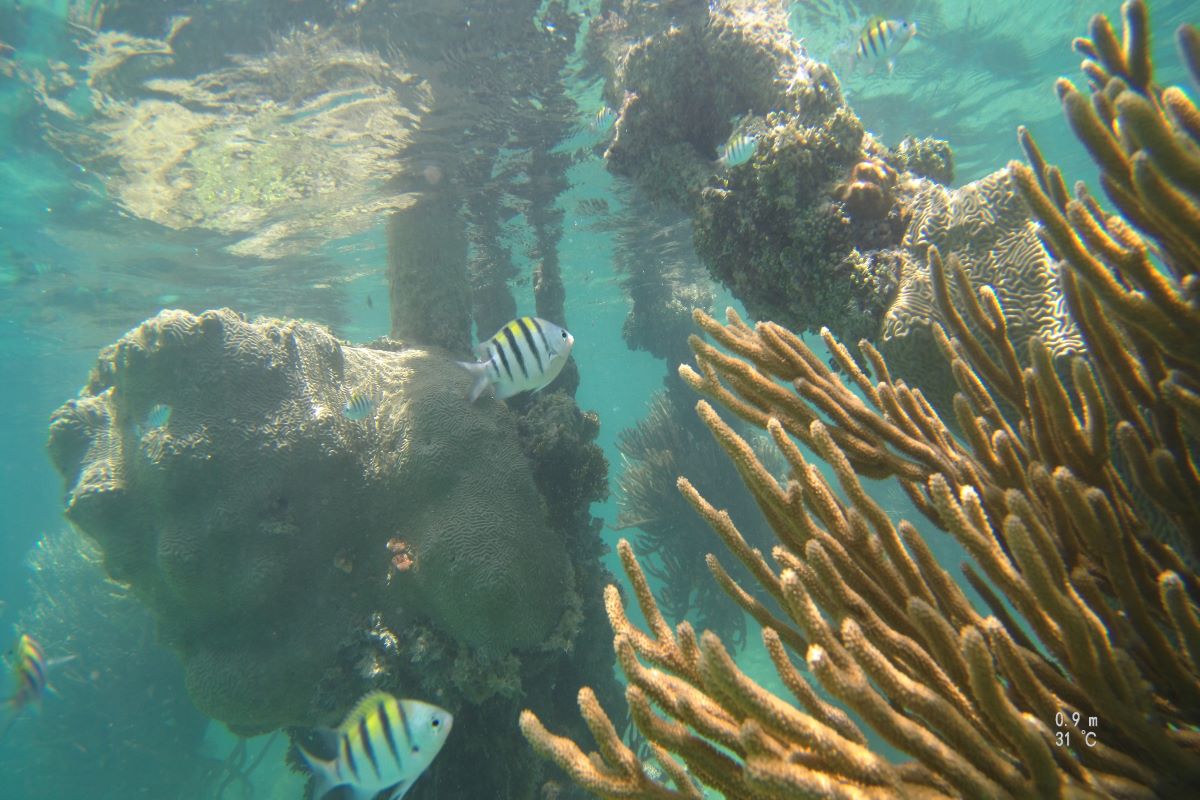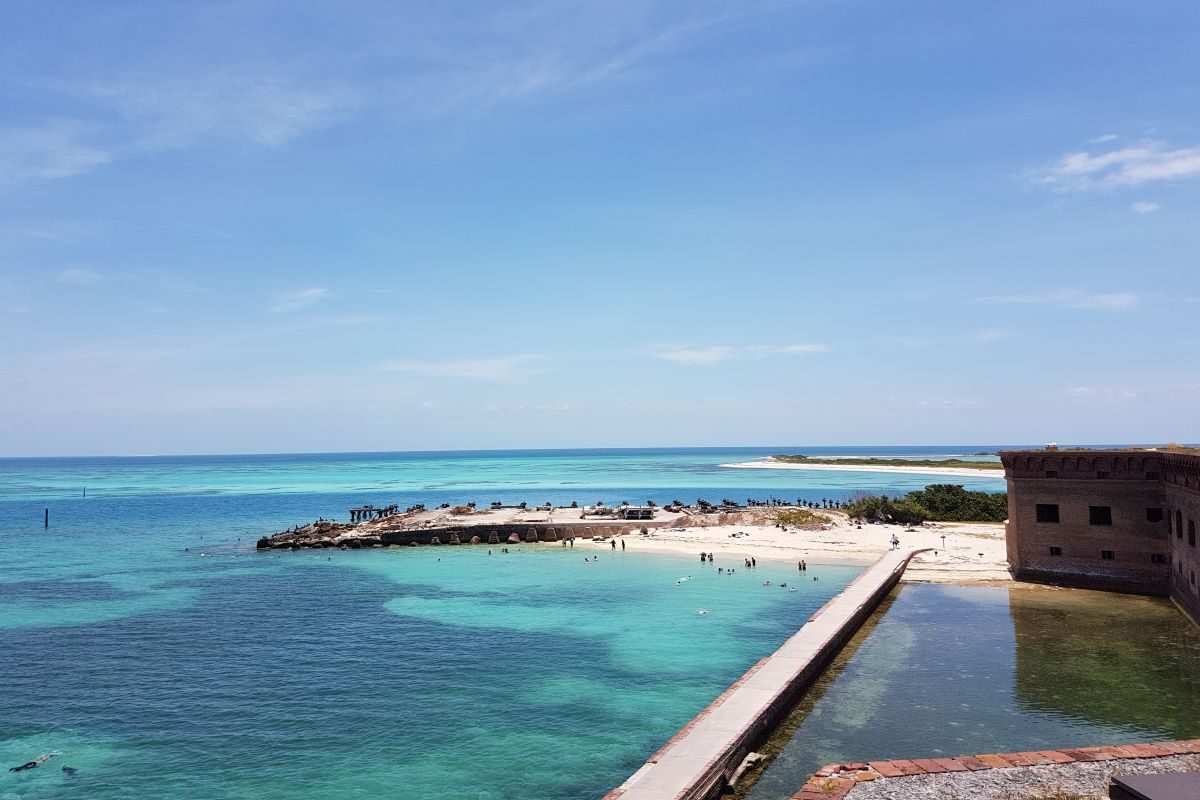FLORIDA KEYS, UNITED STATES
OVERVIEW
A road trip of wrecks, reefs, and renegades. A Florida Keys road trip is a rite of passage. Why? This 125-mile-long (201 km) ribbon of islands is everything that’s wonderful about the red-white-and-blue. Despite being small in size (Key West is only two miles/3.2 km wide), the Keys are larger than life. Big characters. Big trucks. Fifteen-page breakfast menus. And more history than you can imagine crammed into 200-plus years. The Keys are also a natural stunner: the 2,900-square-nautical-mile (9,947 sq km) Florida Keys National Marine Sanctuary encompasses a turquoise wonderland rich with mangroves, reefs, and seagrass beds.
DIVING IN THE FLORIDA KEYS
Wreck and reef diving on an awesome road trip. The Keys have more dive sites then you can explore in a lifetime, including North America’s only living coral barrier reef, a marine sanctuary, and a Shipwreck Trail comprised of nine historic underwater wrecks (like the world class, 524-foot U.S.N.S. Vandenberg), and artificial reefs stretching from Key Largo to Key West. There’s plenty on offer for beginner through advanced divers.
DIVE SHOPS IN THE FLORIDA KEYS
We dove with Rainbow Reef Dive Center in Key Largo. This is a popular, busy shop with eight boats taking out more than 200 divers per day to multiple sites, usually on two-tank dives. They are Blue Star certified in their commitment to protecting reefs, and are a knowledgeable and professional shop. (Great to learn with!) In Key West, we dove with Dive Key West, a smaller shop that is incredibly experienced with great local knowledge. They have a custom-built dive boat and offer courses and Nitrox.
THINGS TO DO IN THE FLORIDA KEYS
In Key Largo, pair a visit to John Pennekamp Coral Reef State Park (the United States’ first designated undersea park, featuring snorkel and diving trips, glass-bottom boat rides, kayaking, and hiking trails) with a canal cruise on the original African Queen, the steamboat that starred in the movie of the same name alongside Katharine Hepburn and Humphrey Bogart. She’s been restored to her original 1912 splendour and is now based in Marina Del Mar (three miles/4.8 km south of the park).
In Key West, take a city tour with Key Lime Bike Tours. This 2.5-hour cycle tour (covering about five miles/8 km) travels from iconic Mallory Square to mahogany tree-lined Caroline Street, once home to Robert Frost and Jimmy Buffet. And don’t forget to visit the interactive and engaging Florida Keys Eco-Discovery Center.
DON’T MISS
Don’t miss a day-trip to 19th-century Fort Jefferson in the Dry Tortugas, located about 70 miles (112.6 km) west of Key West. This trip is part history lesson, part nature tour, and epic snorkeling. (Tip: There is no shade on-island!)
BEST PLACE TO STAY IN THE FLORIDA KEYS
Kimpton Key West’s Winslow’s Bungalows captures that Key West vibe: think cool, spacious rooms, wraparound porches, and a turquoise pool. Located on quiet, historic Truman Street, it’s an easy walk to the hustle and bustle of Duval Street.
BEST RESTAURANT OR BAR IN THE FLORIDA KEYS
The Stoned Crab in Key West is what seafood dining should be: great food, lively atmosphere, waterside dining, and sustainably sourced. The Stoned Crab works with Three Hands Fish, which connects local fishermen with Key West restaurants. Your seafood is wild-caught by fishermen who are mindful of environmental pressures, and sold directly to the restaurant. The restaurant serves your meal accompanied by baseball cards featuring information on the fisherman who caught it.
TRAVEL ADVICE (INSIDER TIP)
Miami International Airport is the closest gateway, but it is a nightmare to navigate. Keys’ residents told us they travel out of their way to fly in and out of Fort Lauderdale, as it’s a better experience.
A visit to the Coral Restoration Foundation (CRF), the world’s largest coral restoration organization, should be a must for any Key Largo visitor. Since 2007, CRF has planted more than 170,000 corals (primarily endangered elkhorn and staghorn) onto the Florida Reef Tract. Their visitor’s center has a wealth of information about how critical coral reefs are. Reefs generate half the Earth’s oxygen, absorb nearly one-third of the carbon dioxide generated by burning fossil fuels, and provide a critical habitat for more than a quarter of all marine life. Snorkelers and scuba divers can join CRF for a day of hands-on coral restoration, helping outplant corals at one of their seven coral nurseries. Presentations can be arranged for families or dive groups with advance notice.


If you enjoyed this, you’ll love A Diver’s Guide to the World. Pick up your copy today and start exploring!


